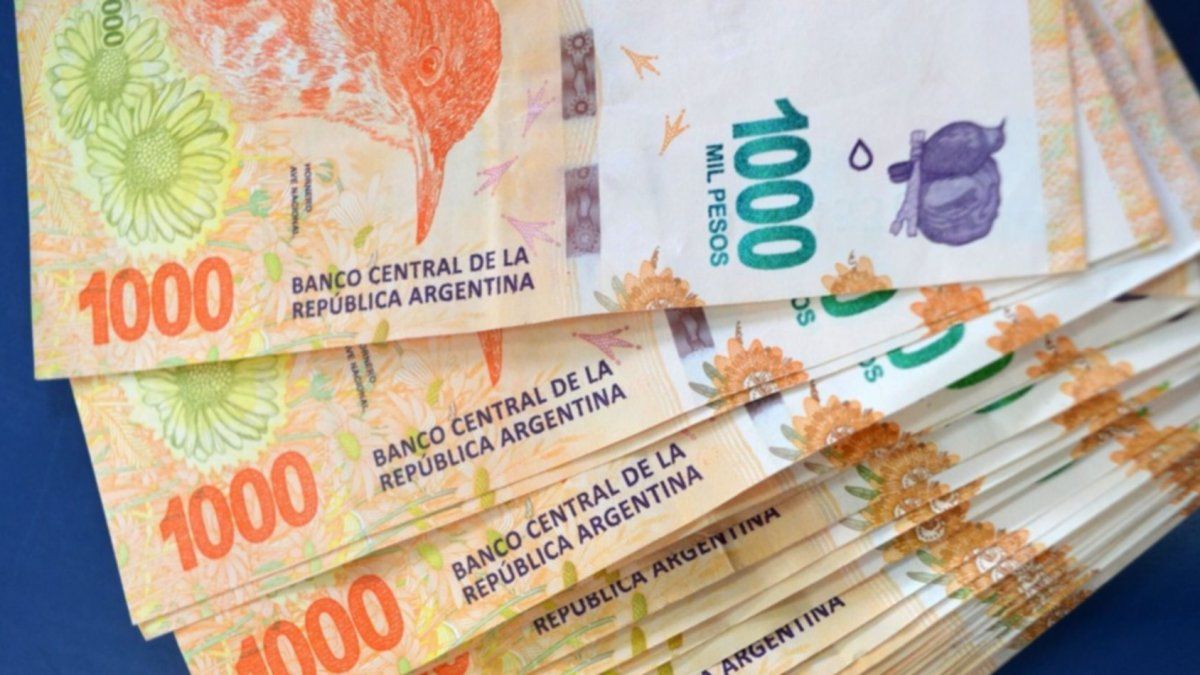In the last days of february a rise of the swine standing at $350, the chicken at $400 per kilo in a box and the 360 eggs to $11,000. Today, few farms would enter the Cañuelas market, signs that the farm may continue to rise in price.
In this context March appearswhich is a month where seasonally high inflation levels are observed. We will have 21 business days, a long month, where inflation can play a trick on the government.
February was a contractive month in monetary matters, there is no weight on the street. The Central Bank continues to aspire pesos by leaps and bounds. Of the total monetary liabilities, 32.5% are unpaid and 67.5% are paid. To put it in more precise numbers, $5.3 trillion is the monetary base and $10.9 trillion is the remunerated liabilities (Leliq, Passes and others).
As can be seen in the table, theThe monetary base increases 46.2% per year, when inflation in the last 12 months is around 100% per year, this implies that a lot of money has been withdrawn from the street, this leaves us with a more recessive market.
On the side of the weight absorption instruments, we observe that the leliq have increased 132.6% annually, there is an abuse in the withdrawal of funds that ends up generating a liability to the Central Bank that considerably increases the quasi-fiscal deficitwhich today is higher than the fiscal deficit.
The total monetary liabilities grow at a rate of 95.2% per yeara level very similar to annualized inflation.
painting-di-stefano.jpg
If we compare monetary liabilities with the reserve stock which is located around the US$39,000 millionwe would have an equilibrium exchange rate of $415. In the market, on the last day of February, the dollar MEP is listed at $356.78, the counted with liquidation at $367.02, the Dolar blue at $380 and the tourist dollar at $404.
The lack of liquidity and the intervention of the Central Bank do not allow the dollar to continue its upward processgenerating a spring effect which, at some point, will become apparent over the course of the next few weeks. If the monetary base had copied the evolution of inflation, it should be around $7.0 trillion, as it is well below said level, the lack of pesos is felt in the market.
Is Central Bank pesos vacuum cleaner, adds to the placement of Treasury debtwhich removes liquidity from the market and banks.
It is striking how bills with terms between 58 and 121 days yield between 118.5% and 119.7% per year. While long-term bonds maturing in 2024 begin to rise in price registering diminishing returns. How is this understood? The intervention of the Central Bank decreased, which went out to buy bonds in pesos that are adjusted by CER, dual bonds and bonds that are adjusted by linked dollars.
While the Central Bank intervenes, Peso bond parities rise and yields fall, but the amount of money issued increaseswhich is later absorbed via leliq and increases the Central Bank’s liabilities.
It is estimated that, in the last 12 months, the Central Bank issued close to $1.9 trillion pesosof which $447 billion were issued in the last 3 months.
conclusions
The monetary base is equivalent to 6.5% of GDP, a very low level of monetization for our economy. This forces the Central Bank to have a high amount of monetary liabilities that generate a very high and dangerous quasi-fiscal deficit.
The fiscal deficit of the Treasury for the last 12 months is 4.3% of GDPMeanwhile he quasifical deficit is 4.9% of GDP. The deficit of the Central Bank is higher than that of the Treasury.
The total fiscal deficit is 9.2% of GDPthis forces the government to make a high effort to achieve fiscal surplus, which is the only way to reach a solution to our inflationary problem. Otherwise 3-digit inflation in sight.
The government leaves a very high debt in pesosbut in recent months he is doing mischief.
The debt in pesos measured in dollars amounts to US$132,546 million as of January 2023, what reflect an increase of US$20,687 million. This was due to an increase in debt to variable rate of US$30.300 million and a decrease in debt in CER of US$9,613 million. The government is paving the way to liquidate the debt.
The government has no way out high fiscal deficit, monetary overflow in the Central Bank, high liabilities in pesos both in the Treasury and in the Central Bank, times are getting shorter, devaluation or recession that is the way.
Source: Ambito
David William is a talented author who has made a name for himself in the world of writing. He is a professional author who writes on a wide range of topics, from general interest to opinion news. David is currently working as a writer at 24 hours worlds where he brings his unique perspective and in-depth research to his articles, making them both informative and engaging.




